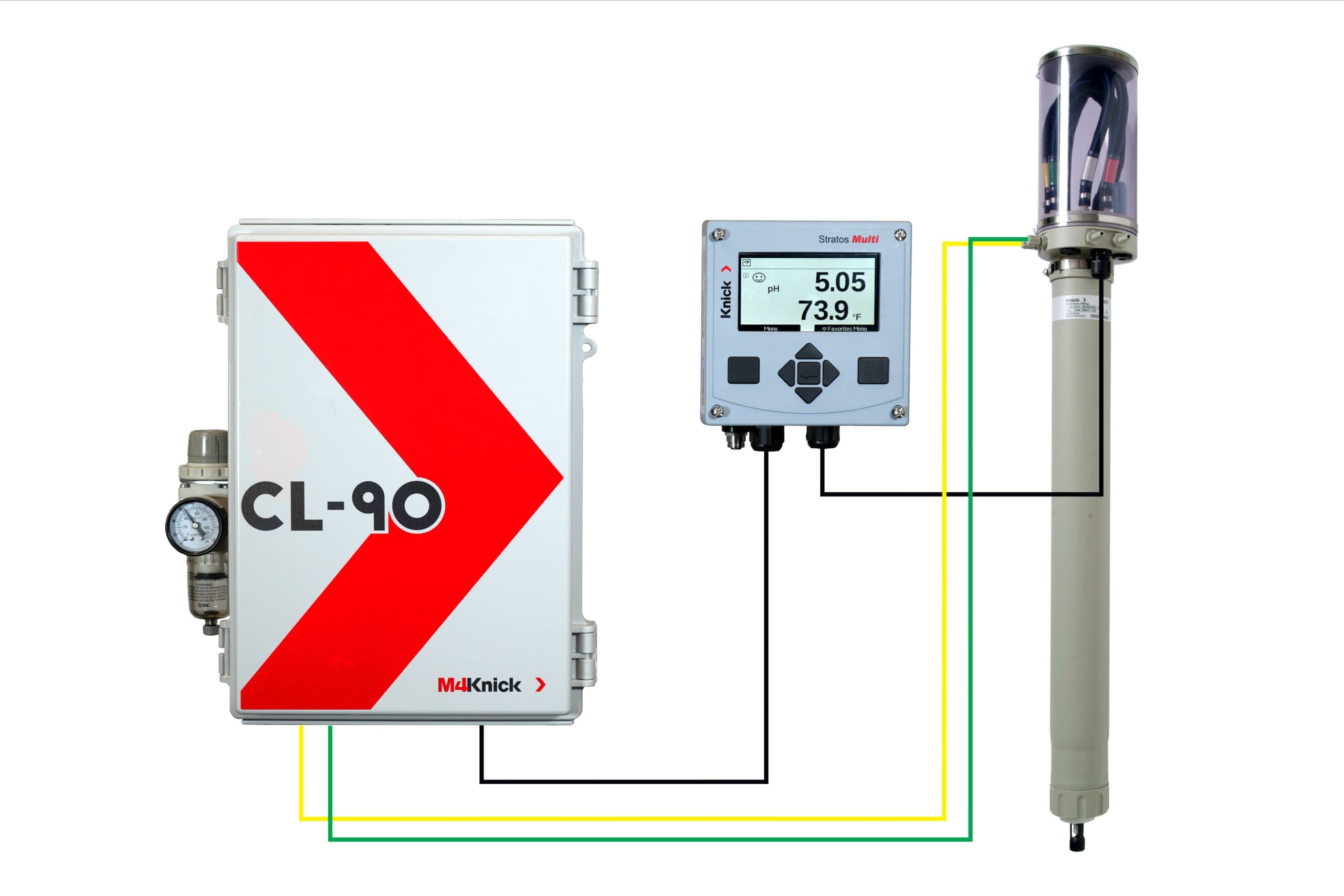pH Measurements on Semiconductor Wastewater Streams
Chemical clarifiers are vital to the removal of harmful compounds in various stages of water treatment applications. Clarifiers are settling tanks designed for use in various stages along semiconductor wastewater streams. Lime is added to neutralize the low pH influent from the semiconductor production areas. Monitoring pH in the influent, clarification, and effluent stages of water treatment is crucial to verifying that impurities are sufficiently removed. Subsequently, the pH value within the clarifying system must be monitored and often controlled. Introducing lime into the clarifying process helps maintain optimal pH levels. Over time, however, this lime can cause buildup and potentially damage the pH sensor if not adequately cleaned.
The Challenge of Semiconductor Chemical Clarifiers
The general chemistry of the chemical clarifier’s contents, coupled with the introduction of lime over an extended period, can create a harmful environment for the sensor. This forces users to conduct frequent manual cleanings and maintenance. Failing to keep up with cleaning and maintenance can lead to inaccurate readings caused by buildup and cut sensor life short. This prompts frequent sensor replacements that increase costs and can cause process shutdown.
The Solution
 Semiconductor chemical clarifiers require robust pH sensors to withstand both the lime buildup and the acidic environment. The Knick SE 554’s design provides high resistance to buildup due to dual open junctions. Additionally, the polymerized KCL protects against leaching, and the patented Silamid reference slows the poisoning of the reference system. The SE 554’s glass composition can also withstand trace amounts of hydrofluoric acid (HF). This gives the sensor an extended life to semi-conductor waste treatments application like clarifiers.
Semiconductor chemical clarifiers require robust pH sensors to withstand both the lime buildup and the acidic environment. The Knick SE 554’s design provides high resistance to buildup due to dual open junctions. Additionally, the polymerized KCL protects against leaching, and the patented Silamid reference slows the poisoning of the reference system. The SE 554’s glass composition can also withstand trace amounts of hydrofluoric acid (HF). This gives the sensor an extended life to semi-conductor waste treatments application like clarifiers.
We pair the Knick SE 554 with a CL-90 automated cleaning system and ARD 75 retractable immersion holder. Automated cleaning cycles maintain the sensor at regular intervals. The automated retraction and maintenance schedule extends sensor life by preventing excessive buildup from accumulating on the sensor.
The Stratos Multi transmitter, which runs the CL-90, is Memosens compatible. Memosens sensors like the SE 554 automatically share calibration and sensor health information with the transmitter. The system is ready to measure without any additional programming. Furthermore, operators can acquire diagnostics data at-a-glance or through DCS system from the Stratos Multi.
What was the Customer’s ROI?
Reduced Downtime:
The CL-90 and Knick ARD 75 retractable holder greatly reduce process downtime and unscheduled maintenance by automatically cleaning the sensor, preventing drift and buildup.
Reduced Maintenance Costs:
Pre-calibrated Memosens smart digital technology simplifies troubleshooting and calibrations done in the field. The system eliminates the need for technicians to manually clean pH sensors. Additionally, the system also significantly extends the pH sensor life. As a result, better sensor life reduces maintenance costs from frequent sensor replacement.
Increase Sensor Life:
Due to its unique glass recipe, the SE 554 is resistant to trace HF and lime buildup. Pairing the 554 with the combination of the CL-90 and ARD 75 retractable immersion holder enables users to implement regular automated cleaning cycles that extend sensor life, reducing material and labor costs.


